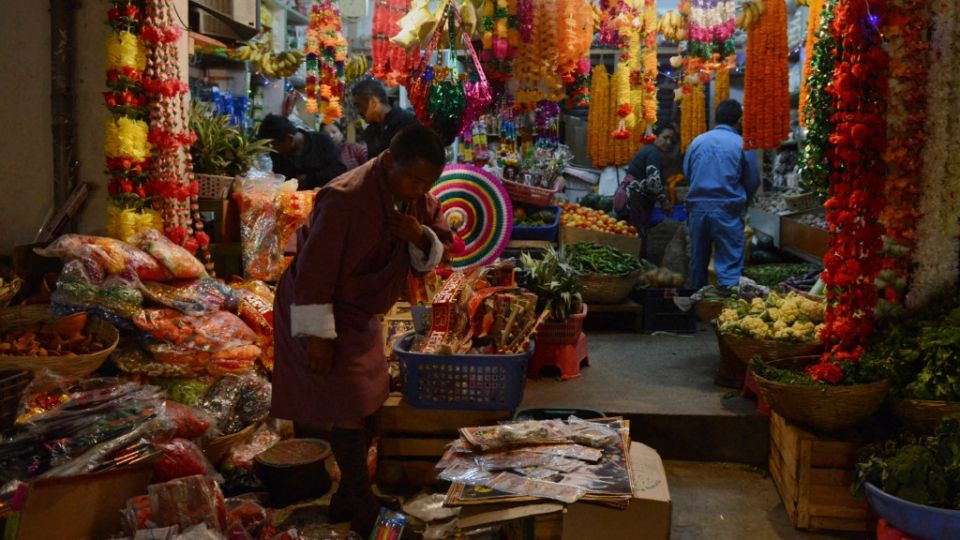June 24, 2025
THIMPHU – Urban households in Bhutan are spending more on non-food essentials than ever before, outpacing rural areas across nearly all categories, according to findings from the Household Consumption and Expenditure Survey 2025.
The survey indicates that the average monthly household non-food consumption expenditure stands at Nu 32,396, translating to about Nu 10,365 per person.
However, urban households outspend their rural counterparts, with an average monthly expenditure of Nu 40,299 compared to Nu 27,583 in rural areas. This disparity clearly shows the growing differences between urban and rural living in terms of income, access to services, and lifestyle.
Nationwide, the largest portions of household spending are allocated to housing and utilities (23.7 percent), transport (20.7 percent), insurance and financial services (72.7 percent), and special family occasions (70.4 percent). However, a closer look reveals distinct consumer priorities based on location.
For example, urban households primarily spend on electricity, while rural households rely heavily on fuelwood, reflecting existing infrastructure gaps and access issues.
Similarly, in Information and Communication Technology (ICT), urban households spend an average of Nu 4,017, nearly double the rural average of Nu 2,387. Spending on clothing further indicates the economic divide. Urban households spend about Nu 2,525 per month on clothing compared to Nu 1,711 in rural areas, with 82.4 percent of expenditure going towards ready-made garments. Urban residents also spend slightly more on tailoring and maintenance, reflecting better access to such services.
Footwear purchases also show an economic divide. Paro, Bumthang, and Gasa lead with the highest expenditures. Rural households prioritise durable men’s shoes, while urban homes spend slightly more on women’s footwear and repair services.
High cost of urban housing and mobility
Housing costs are higher in urban areas, with an average monthly expenditure of Nu 9,283, over Nu 2,500 more than rural households.
Thimphu and Phuentsholing thromdes reported the highest housing expenses, driven by higher rents, utility bills, and imputed rental values. Rural homes, however, face higher property maintenance costs at Nu 2,034, compared to Nu 1,376 for urban homes.
Similarly, urban mobility comes at a cost. On average, households spend Nu 7,825 on transport-related expenses, with significantly higher costs in urban areas due to greater spending on vehicle purchases and public transport services. In Thimphu Thromde alone, monthly transport expenses reach Nu 73,035, highlighting the intense mobility demands in the capital.
The reports reveal an interesting paradox, urban dwellers buy more cars, but rural families spend more operating and maintaining their cars, which suggests differing ways people use their personal transport.
Access to health and education
Healthcare spending reveals another layer of inequality. Rural households spend an average of Nu 1,032 monthly on health, while urban areas spend more, utilising formal services like outpatient care. Rural homes, however, rely more on medications and traditional healing (Rimdro).
In education spending, urban households spend nearly double (Nu 2,052 monthly) compared to rural households (Nu 1,168). Tertiary education alone accounts for almost half of all education-related spending, pointing to rising aspirations but unequal access.
Meanwhile, women-headed households consistently spend more across several non-food categories, including health, education, ICT, and personal care. For example, women-headed households spend Nu 1,714 on education versus Nu 1,399 for male-headed ones.
Digital and ICT gaps
Despite increasing mobile penetration, a persistent digital divide exists in ICT consumption. Urban households spend over Nu 1,168 on software and Nu 2,356 on services like mobile data.
Urban households also allocate more to recreational services (Nu 1,007 per month), including sports and cultural goods. In contrast, rural families spend more on garden and pet care and spiritual travel (neykor), reflecting distinct lifestyle and cultural orientations.
The national average monthly spending on neykor is Nu 4,072, with female-headed households leading in cultural and religious travel.
The survey’s findings paint a complex picture of evolving household consumption in Bhutan. Urbanisation, infrastructure access, digital connectivity, and gender dynamics are shaping how families prioritise their budgets.


